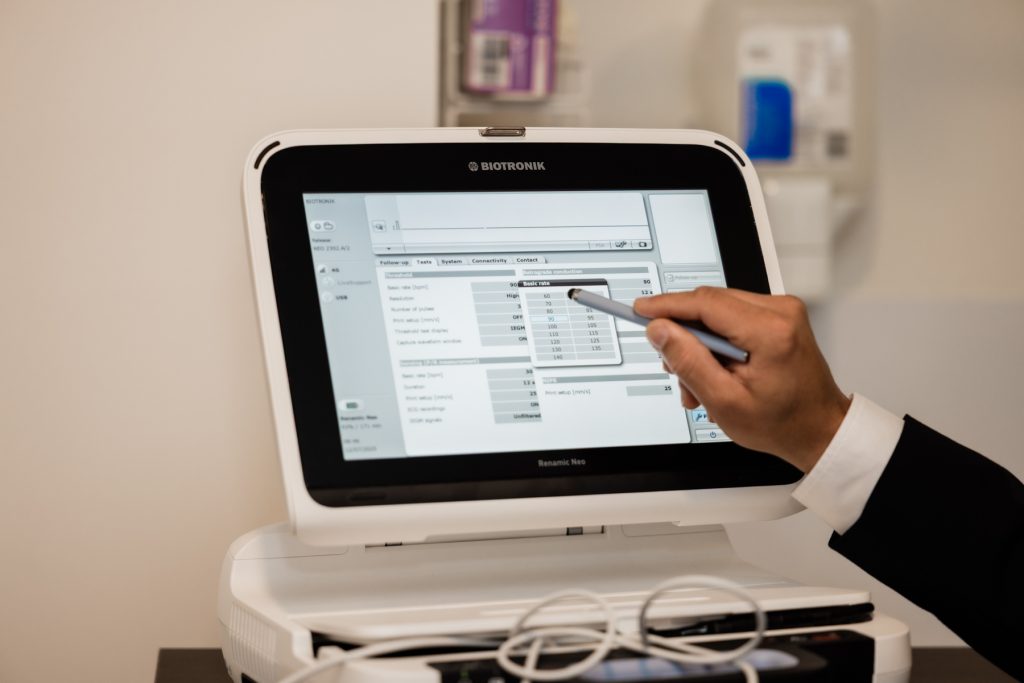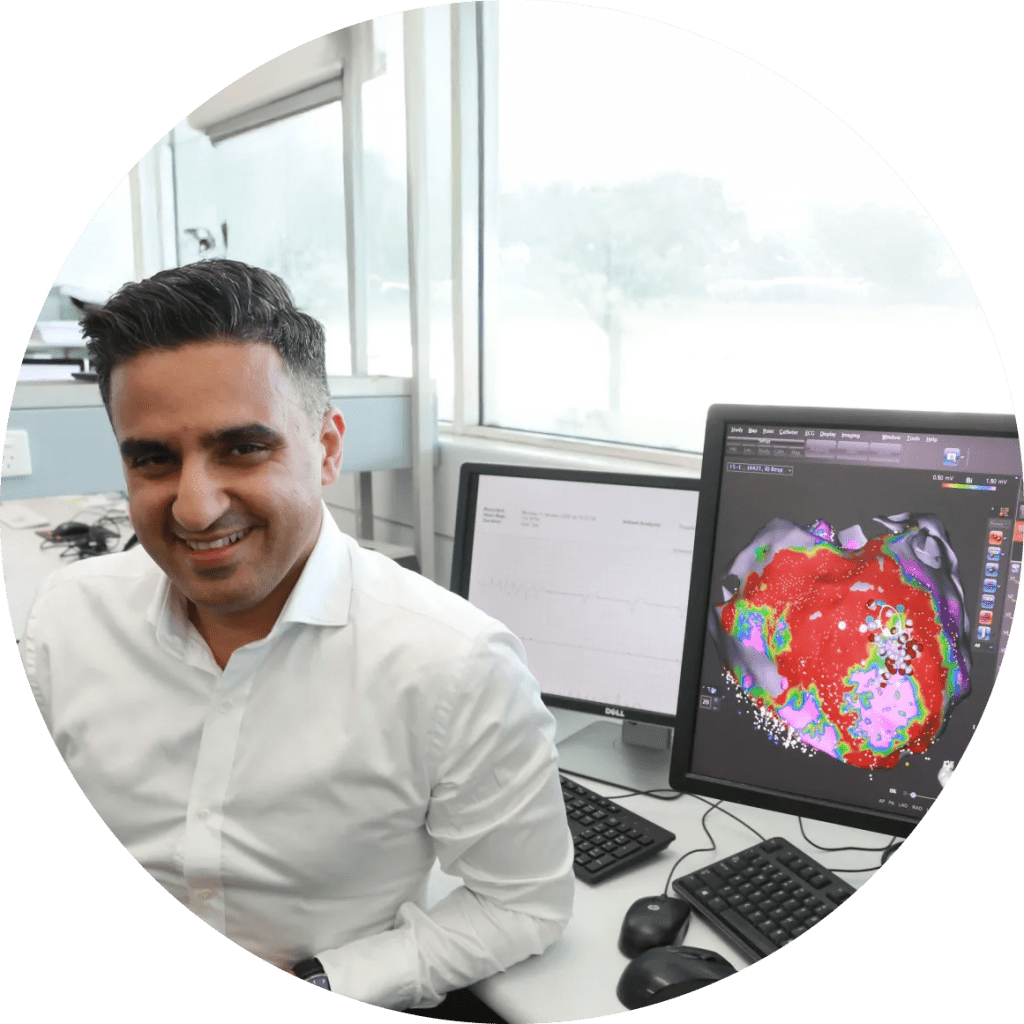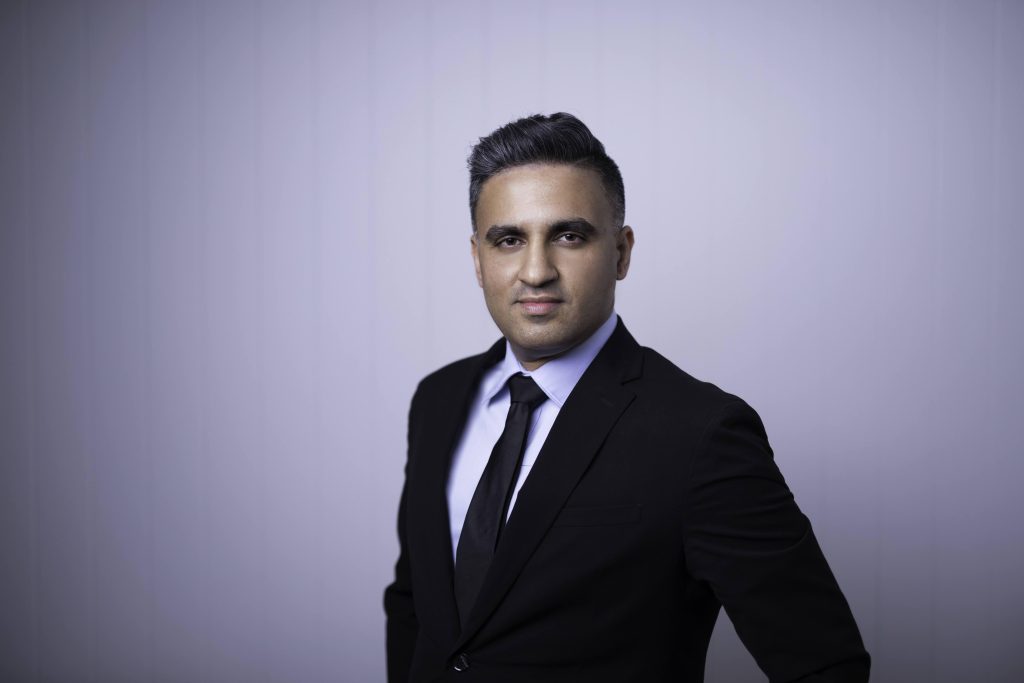Implantable Cardiac Device Follow-Up

Ongoing monitoring for safety, performance, and peace of mind
Implantable cardiac devices such as pacemakers, defibrillators, and cardiac resynchronisation therapy (CRT) systems are designed to provide long-term rhythm support and protect against life-threatening arrhythmias. However, their effectiveness depends on careful follow-up and regular assessment.
A/Prof Saurabh Kumar, a Sydney-based Cardiologist and Interventional Electrophysiologist, offers a comprehensive cardiac device follow-up service tailored to each patient’s device type, clinical history, and long-term goals. With over 15+ years of experience, he ensures that each device continues to function optimally—improving patient outcomes, reducing complications, and providing reassurance over the years.
Why Follow-Up Matters
Once implanted, a cardiac device becomes an integral part of a patient’s health management. Regular follow-up helps to:
- Confirm that the device is working properly
- Detect and respond to silent or symptomatic arrhythmias
- Identify early signs of battery depletion or lead issues
- Monitor changes in the patient’s underlying heart condition
- Adjust settings as required to improve comfort and efficiency
According to the Australian and New Zealand Cardiac Device Advisory & Complications Register (ANZCDAC), timely monitoring of implanted devices is associated with improved survival, fewer emergency presentations, and greater patient confidence.

Devices Monitored
A/Prof Kumar monitors and manages all modern cardiac device types, including:
Pacemakers (Single and Dual Chamber)
Used for bradycardia and heart block, pacemakers require routine checks to confirm capture thresholds, lead integrity, and battery life. Dual chamber systems also require timing optimisation to maintain atrioventricular synchrony.
Implantable Cardioverter-Defibrillators (ICDs)
ICDs are life-saving devices used in patients at risk of ventricular tachycardia (VT) or ventricular fibrillation (VF). Follow-up focuses on arrhythmia detection, shock appropriateness, battery status, and any need for therapy reprogramming.
Cardiac Resynchronisation Therapy (CRT-P and CRT-D)
CRT systems help patients with heart failure and electrical dyssynchrony by coordinating ventricular contraction. Regular device interrogation ensures that both ventricles are pacing correctly and that synchronisation therapy is still achieving its intended benefit.
Leadless Pacemakers
Subcutaneous ICDs
Services Offered
Routine In-Clinic Device Checks
At regularly scheduled intervals—typically every 6 to 12 months—patients attend an in-person clinic for a comprehensive device interrogation. This allows for:
- Battery life estimation
- Lead impedance testing
- Pacing and sensing threshold evaluation
- Device memory review for arrhythmias or therapy delivery
Remote Home Monitoring Services
Most modern cardiac devices are equipped with remote monitoring technology. Patients are provided with a secure home transmitter, which automatically sends data to A/Prof Kumar’s clinic. This allows for:
- Early detection of arrhythmias or technical issues
- Reduced need for travel and in-person visits
- Timely alerts in the event of therapy delivery or device malfunction
Remote monitoring has become standard of care for many patients and is associated with faster response to clinical changes, improved outcomes, and greater peace of mind.
Battery Life and Lead Integrity Assessments
Battery depletion is predictable, but needs to be carefully monitored to allow for safe generator replacement planning. Lead failure—while rare—can cause inappropriate pacing, loss of therapy, or misleading alerts. Routine lead assessments help prevent these complications.
Device Reprogramming to Adjust Thresholds and Therapies
Device settings can be adjusted to:
- Optimise battery life
- Minimise unnecessary pacing
- Refine VT/VF detection criteria
- Improve patient comfort (e.g. avoiding pacing-induced palpitations)
- Maximise the effectiveness of CRT
Every reprogramming decision is made with clinical judgement, device data, and patient symptoms in mind.
Arrhythmia Detection Through Device Diagnostics
Implanted devices continuously record and store information about heart rhythm. These data logs can reveal:
- Asymptomatic episodes of atrial fibrillation (AF)
- Onset of non-sustained VT
- Recurrence of known arrhythmias
- The effectiveness of therapies already delivered (e.g. shocks or anti-tachycardia pacing)
In many cases, device-detected arrhythmias lead to changes in medication, referral for ablation, or further risk assessment.
Alerts For Silent AF, VT/VF or Lead Failure
Modern devices can generate automated alerts for:
- Episodes of silent atrial fibrillation
- VT/VF requiring or receiving therapy
- Battery nearing elective replacement
- Lead fracture or insulation breach
A/Prof Kumar’s clinic receives these alerts in real time and can contact patients quickly to review symptoms and arrange any necessary intervention.
Infection or Lead Malfunction Surveillance
Although uncommon, infection is a serious complication of cardiac devices. Signs such as generator site redness, fever, or unexplained discomfort must be investigated promptly. Routine follow-up includes vigilance for these issues, with imaging or microbiological testing arranged if needed.
Collaborative, Long-Term Care
Ongoing device follow-up is a shared process involving the patient, cardiologist, and general practitioner. A/Prof Kumar provides detailed follow-up reports after each review and coordinates care with other health providers to ensure continuity and clarity.
By combining regular in-clinic evaluations with remote monitoring capabilities, his follow-up program offers patients both convenience and security—knowing their cardiac device is functioning exactly as it should.


Take Control of Your Heart Health Today.
A/Prof Saurabh Kumar brings over 15+ years of clinical expertise to the care of patients with heart rhythm disorders and general cardiac conditions. He is widely regarded within the Australian cardiology community and internationally for his depth of knowledge, collaborative style, and commitment to patient-centred care.
He holds dual roles as a Staff Specialist Cardiologist and Cardiac Electrophysiologist at Westmead Hospital and Clinical Associate Professor of Medicine at the University of Sydney. He currently serves as the Program Director for Ventricular Arrhythmias and Sudden Cardiac Death at Westmead Hospital and is the Translational Electrophysiology Lead at the Westmead Applied Research Centre, University of Sydney.